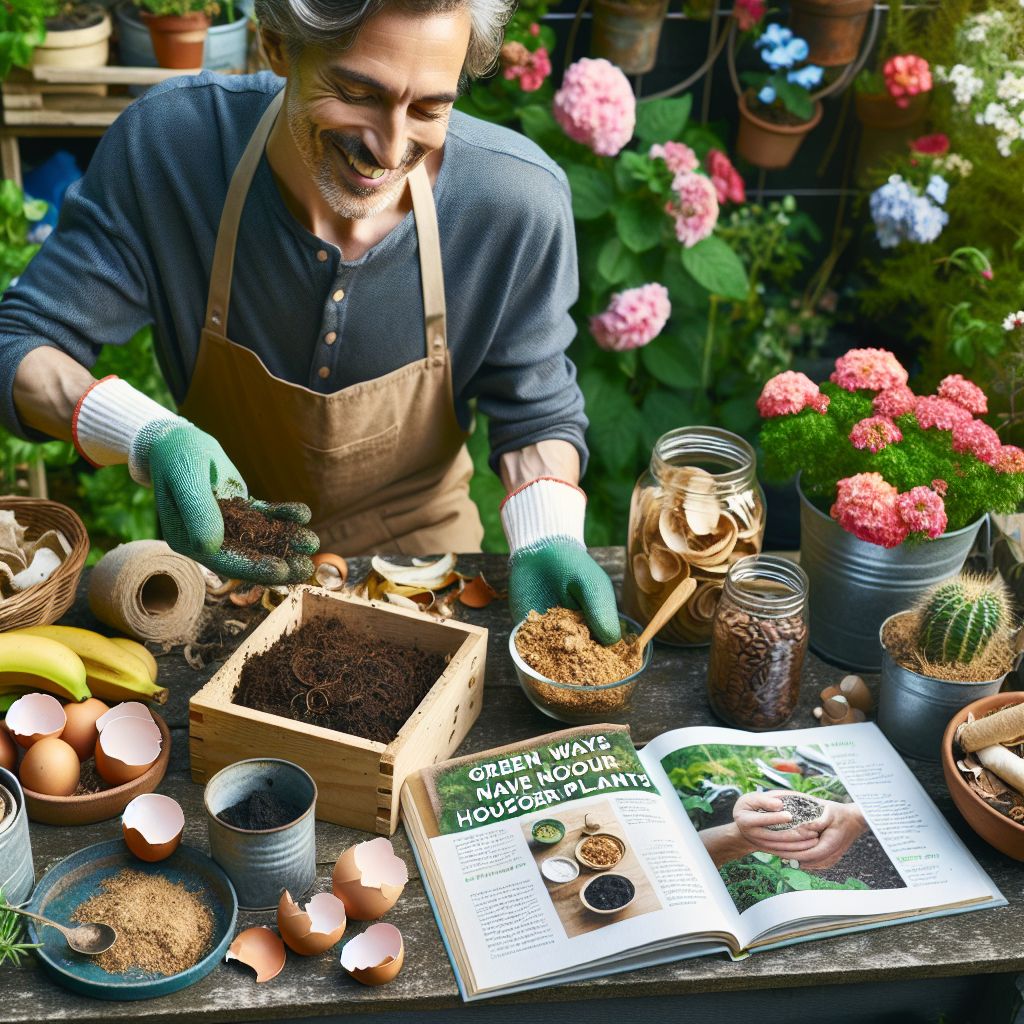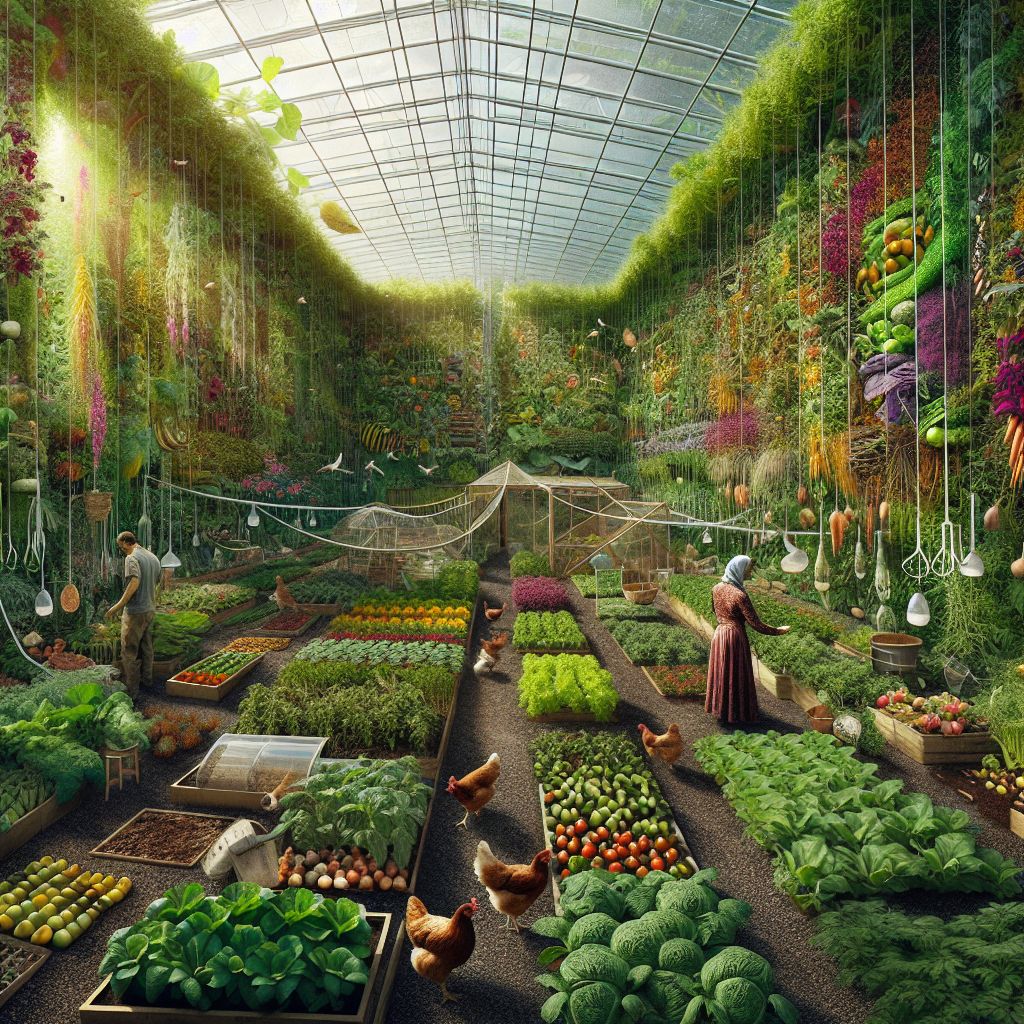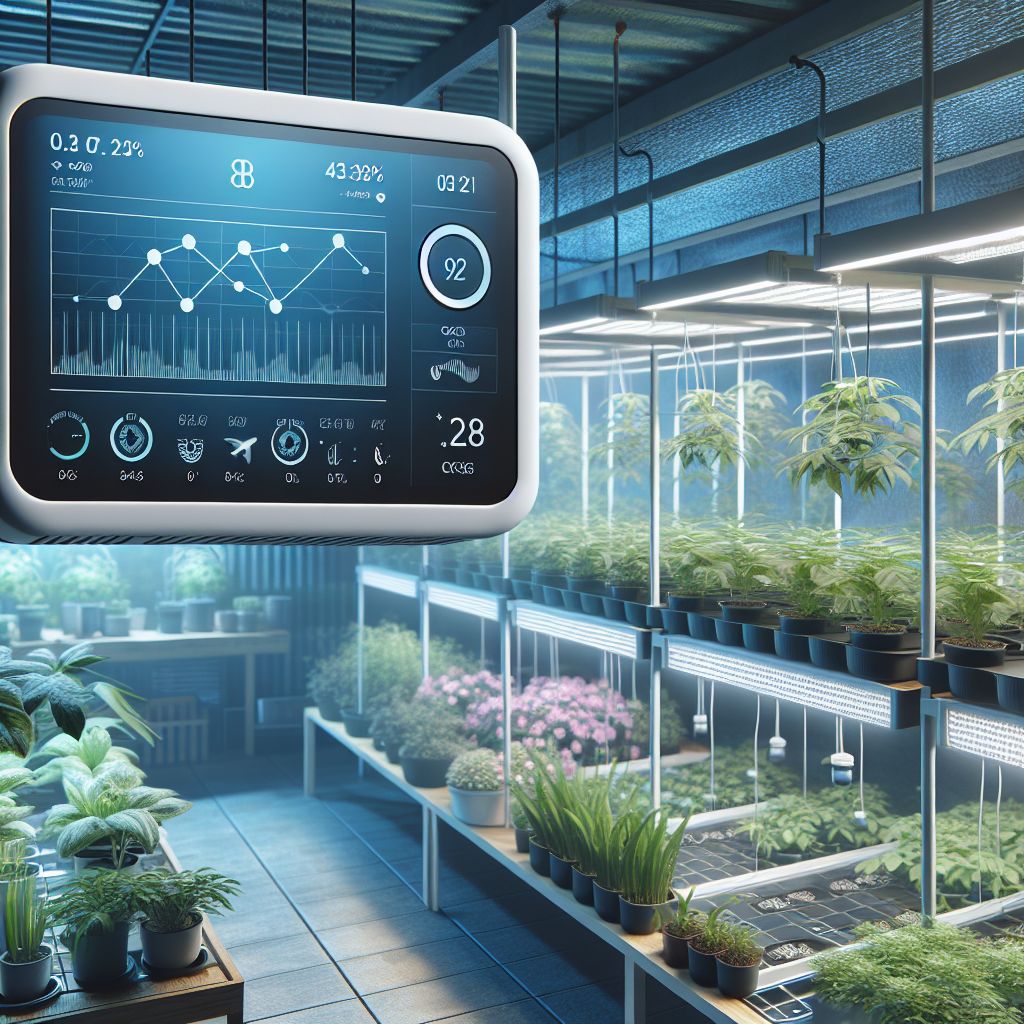Key Takeaways
- Rooftop farming is an innovative way to utilize urban space for growing fresh produce.
- Before starting, assess the structural integrity of your roof and understand local regulations.
- Selecting the right plants for your climate and setting up an efficient irrigation system are crucial.
- Regular maintenance, such as watering and weeding, is essential for a thriving rooftop garden.
- Marketing your produce and planning your finances carefully will turn your green thumb into profits.
Seeds of Success: Starting Your Rooftop Farm
Welcome to the world of rooftop farming, where the sky’s the limit when it comes to growing your own food. Whether you’re a seasoned gardener looking to take your passion to new heights or a beginner with a vision of green, urban spaces, starting a rooftop farm is an adventure worth embarking on. Let’s dive into what it takes to transform that empty rooftop into a lush, productive garden that not only feeds the body but also nourishes the soul.
Understanding Rooftop Farming Basics
At its core, rooftop farming is about making the most of limited space in urban areas. It’s a smart solution to the challenges of city living, offering a way to access fresh, locally grown produce right where people live and work. But before you start hauling up soil and seeds, it’s important to understand the basics. Rooftop farming involves more than just planting—it’s about creating a mini ecosystem that can support plant life in a non-traditional environment.
So, what do you need to get started? First, you’ll need a clear vision of what you want to achieve. Are you aiming for a small herb garden or a full-fledged vegetable haven? Your goals will guide your decisions as you move forward. Secondly, you’ll need commitment. Rooftop farming requires regular attention and care, but the rewards are well worth the effort.
Assessing Your Roof’s Farming Potential
Before you get carried away with visions of tomato vines and pepper plants dancing in your head, let’s talk about the foundation of any rooftop farm—the roof itself. Not all roofs are created equal, and it’s essential to determine if yours is up to the task of supporting a garden.
Assessing structural feasibility and load-bearing capacity
One of the first steps is to assess the structural feasibility and load-bearing capacity of your roof. This is vital because soil, plants, and water can be heavy, and the last thing you want is to compromise the safety of your building. A structural engineer can help you determine if your roof can handle the extra weight and what modifications might be necessary.

Garden Village Apartments in Berkeley, CA; designed by Benjamin Fahrer of Top Leaf Farms
Here are a few things they’ll look at:
- The age and condition of the roof
- Weight limits and how they align with your gardening plans
- Any existing damage or areas in need of repair
Once you have the green light from a structural standpoint, it’s time to consider the other elements that will make your rooftop farm thrive.
Gathering Your Tools and Resources
With a sturdy roof under your feet, it’s time to gather the tools and resources you’ll need for your rooftop farm. You don’t need a shed full of equipment to get started, but a few essentials will make the process smoother. You’ll need basic gardening tools like trowels, watering cans, and pruning shears. Besides that, consider investing in high-quality, lightweight containers and soil specifically designed for container gardening to ensure good drainage and healthy roots.
Choosing the Right Plants for Your Climate
One of the keys to a successful rooftop garden is choosing plants that are well-suited to your climate. This means considering the amount of sunlight your roof receives, wind conditions, and the temperature extremes typical for your area. Herbs like basil and rosemary, leafy greens such as lettuce and kale, and smaller fruiting plants like cherry tomatoes and strawberries often thrive in rooftop environments. Remember, the right plants will not only grow better but will also require less effort to maintain.
Planning Irrigation and Drainage Systems
Water is life, especially in rooftop farming where natural water sources might be scarce. Planning an efficient irrigation system is critical to ensure your plants get the hydration they need without wasting water. Drip irrigation or soaker hoses can be a great investment, delivering water directly to the plant’s roots and minimizing evaporation. Most importantly, don’t forget about drainage—excess water needs a place to go, and proper drainage will prevent root rot and structural damage to your building.
Common Approaches to Urban Farming
Urban farming can take many forms, from vertical gardens to hydroponic systems. But when it comes to rooftop farming, container gardening is often the most practical approach. Containers are versatile and can be moved around to take advantage of the sun’s path. Raised beds are another popular choice, as they can provide a deeper soil layer for root growth and can be built to incorporate built-in irrigation and drainage systems.
From Seedlings to Salad: Planting and Maintenance
Soil Preparation and Planting Techniques
Good soil is the foundation of any garden, rooftop or otherwise. For rooftop farming, use a lightweight potting mix that provides good drainage and aeration. When planting, give each plant enough space to grow—crowding can lead to competition for resources and increase the risk of disease. And when it comes to planting, timing is everything. Make sure to plant your seeds or seedlings at the right time for your climate to ensure they have the best chance of thriving.
For example, a rooftop farmer in New York City planted a variety of lettuces in early spring, using a high-quality potting mix and carefully spaced containers. By the time summer arrived, they were harvesting fresh salads daily, directly from their rooftop oasis.
Routine Care: Watering, Weeding, and Pruning
After planting, consistent care is what will keep your rooftop farm flourishing. Water your plants regularly, but be mindful of overwatering—roots need oxygen as much as they need moisture. Keep an eye out for weeds that can steal nutrients from your crops and remove them promptly. And don’t forget to prune your plants when necessary to encourage healthy growth and good air circulation.
Dealing with Pests and Common Urban Plant Diseases
Pests and diseases are a fact of life in gardening, and rooftop farms are no exception. The key is to be proactive and vigilant. Use physical barriers like netting to keep pests at bay and introduce beneficial insects that prey on common pests. If diseases do appear, remove affected plants quickly to prevent spread. Always choose the least toxic treatment options to maintain a healthy ecosystem on your rooftop.
Turning Green Thumbs into Green Profits
Marketing Your Rooftop Produce
When your rooftop garden starts to bear fruit (and vegetables), it’s time to think about marketing your produce. Start by connecting with your local community—neighbors, friends, and family are a great first market. Consider setting up a stand at a local farmer’s market or partnering with nearby restaurants that value locally sourced ingredients. Use social media to showcase your garden’s progress and the fresh produce you offer—it’s a powerful tool to reach a wider audience.
Navigating City Regulations and Permits
Before you start selling your produce, make sure you’re aware of the local regulations and permits required. Reach out to your city’s agriculture extension office or a similar organization to understand what’s needed. They can provide guidance on food safety regulations, business licenses, and any other legal requirements. Staying compliant is crucial to operate your rooftop farm as a legitimate business.
- Check if a business license is required for selling produce.
- Understand food safety regulations that apply to your products.
- Know the zoning laws and building codes related to rooftop farming.
Financial Planning: Budgets, Expenses, and Revenue Streams
Financial planning is the backbone of any business, and rooftop farming is no exception. Start by creating a budget that outlines your initial setup costs, ongoing expenses, and projected income. Here’s a basic breakdown to consider:
- Initial costs: These might include structural assessments, containers, soil, seeds, and irrigation systems.
- Ongoing expenses: Regular purchases such as fertilizers, water, and tools, as well as any marketing costs.
- Revenue streams: This could be direct sales of produce, offering gardening workshops, or consulting services.
Remember, successful financial planning will help you sustain your rooftop farm and even expand it in the future.
Community and Environmental Impact
Rooftop farming isn’t just about fresh produce—it’s about building a greener, more sustainable future. By starting a rooftop farm, you’re contributing to the health of your city in more ways than one. You’re providing habitat for pollinators, reducing urban heat islands, and even potentially improving air quality. Most importantly, you’re fostering a sense of community. Rooftop farms can be gathering places, educational spaces, and a source of local pride.
Building relationships with local businesses and residents is a great way to integrate your rooftop farm into the fabric of the community. Host tours, workshops, or farm-to-table dinners to engage people with your mission. And don’t forget to share your successes and challenges—transparency builds trust and encourages others to join the urban farming movement.
As you can see, rooftop farming is more than just a hobby or a business—it’s a way of life that can transform rooftops and communities alike. With careful planning, a bit of hard work, and a whole lot of passion, you can turn that empty space above your head into a thriving garden that’s good for the planet and the palate. So roll up your sleeves, it’s time to get growing!
Community and environmental impact go hand-in-hand with the practice of rooftop farming. By transforming an underutilized roof into a verdant garden, you’re not just growing plants—you’re cultivating a healthier urban environment and a stronger sense of togetherness among city dwellers.
Building Relationships with Local Businesses and Residents
- Engage with community members to share knowledge and produce.
- Partner with local restaurants and markets to supply fresh, rooftop-grown ingredients.
- Organize events like workshops or harvest dinners to foster community involvement.
Creating bonds with those around you can turn a personal project into a communal triumph. Imagine supplying a neighborhood café with fresh herbs or collaborating on a green initiative with a local school. These connections not only support your rooftop farm but also embed it into the local culture.
Moreover, involving residents can lead to shared experiences that enrich everyone’s lives. Hosting a workshop on urban agriculture or a day for families to plant seedlings can inspire others to start their own green projects. It’s a beautiful cycle of growth and learning that benefits the entire community.
Remember, every conversation you have, every plant you grow, and every connection you make contributes to a larger movement towards sustainable urban living. Your rooftop farm is more than a collection of plants, it’s a beacon of possibility in a concrete landscape.
Contributing to Urban Sustainability
Rooftop farming is a green thread in the urban fabric, weaving together elements of sustainability, education, and community well-being. It’s a tangible response to the challenges of food security, urban heat islands, and the lack of green spaces in cities. By starting a rooftop farm, you are taking an active role in creating a sustainable future for urban areas.
Your garden can help to cool down the building below, saving energy and reducing the urban heat island effect. The plants you grow can improve air quality and provide a habitat for beneficial insects and birds. And let’s not forget the social sustainability aspect—rooftop farms can become hubs for community engagement and education, teaching people about the importance of local food systems and eco-friendly practices.
So, as you tend to your crops and watch them grow, know that your actions are making a difference. You’re not just a farmer, you’re an urban eco-warrior, paving the way for a greener, more sustainable city life.
FAQ
Got questions? You’re not alone. Here are some of the most common queries budding rooftop farmers have, along with straightforward answers to get you growing with confidence.
Do I need special insurance to start a rooftop farm?
Yes, it’s a good idea to have insurance for your rooftop farm. Just like any other type of farming, rooftop agriculture comes with its own set of risks. You’ll want to look into liability insurance to protect yourself in case of accidents or damage. Additionally, consider property insurance for your equipment and crops. It’s best to consult with an insurance agent who can guide you through the specifics based on your location and farm setup.
What are some common challenges I might face with a rooftop farm?
Starting a rooftop farm can be challenging, but don’t let that deter you. Some common hurdles include securing funding, understanding urban farming regulations, and creating a sustainable business model.
- Ensuring your roof can support the weight of the garden.
- Dealing with extreme weather conditions like high winds or intense heat.
- Managing water efficiently, both in terms of irrigation and drainage.
Overcoming these challenges is all about preparation and adaptation. Conduct thorough research, seek advice from experts, and be ready to tweak your plans as you learn what works best for your unique space.
How do I ensure my rooftop garden is sustainable?
To ensure your rooftop garden is sustainable, focus on these key practices:
- Use organic and locally-sourced materials whenever possible.
- Implement water-saving irrigation techniques like drip irrigation.
- Choose plants that are native or well-adapted to your local climate.
- Compost organic waste to create nutrient-rich soil amendments.
By prioritizing sustainability in every decision, from the materials you use to the way you manage waste, you’ll create a garden that not only produces food but also contributes positively to the environment.
Can I get government grants for urban farming?
Depending on where you live, there may be government grants available for urban farming initiatives. These grants can help cover the costs of starting and maintaining your rooftop farm. Look into local, state, and federal programs that support sustainable agriculture and urban greening projects. Organizations like the USDA offer various grants that might apply to your rooftop farm.





